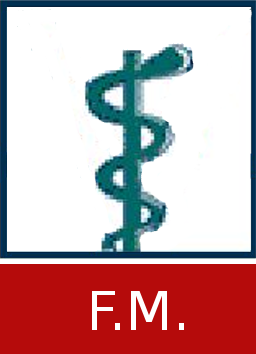Thesis, COLLÉGIALITÉ
Lavender, Marie 
Promoteur(s) : Durieux, Alain
Date de soutenance : 3-jui-2023 • URL permanente : http://hdl.handle.net/2268.2/17838
Détails
| Titre : | Thesis, COLLÉGIALITÉ |
| Titre traduit : | [fr] Analyse d'un cluster de gènes putatif de sidérophore de Pseudomonas graminis et étude des propriétés antimicrobiennes de son produit sur des pathogènes cliniques. |
| Auteur : | Lavender, Marie 
|
| Date de soutenance : | 3-jui-2023 |
| Promoteur(s) : | Durieux, Alain |
| Membre(s) du jury : | Ongena, Marc 
Docquier, Jean-Denis 
HAYETTE, Marie-Pierre 
|
| Langue : | Anglais |
| Nombre de pages : | 62 |
| Mots-clés : | [en] siderophores [en] Pseudomonas graminis [en] antimicrobial properties [fr] sidérophores [fr] Pseudomonas graminis [fr] propriétés antimicrobiennes |
| Discipline(s) : | Sciences de la santé humaine > Immunologie & maladie infectieuse Sciences du vivant > Sciences de l'environnement & écologie |
| Centre(s) de recherche : | NaturaMonas Labiris |
| Public cible : | Chercheurs Etudiants |
| Institution(s) : | Université de Liège, Liège, Belgique |
| Diplôme : | Master en sciences biomédicales, à finalité approfondie |
| Faculté : | Mémoires de la Faculté de Médecine |
Résumé
[en] Given the crisis of multidrug-resistant (MDR) bacteria causing severe infections, the study of siderophores with antimicrobial properties is highly significant. Siderophores, being secondary metabolites notably secreted by bacteria and regulated by iron, exhibit potential for therapeutic use against MDR bacteria. This underscores their potential as promising candidates for combating drug resistance and addressing the challenges associated with MDR infections. This Master’s thesis focused on P. graminis LMG 21661T whose genome contains an uncharacterized siderophore gene cluster and studied its potential antimicrobial properties.
In silico analysis of the putative gene cluster in P. graminis revealed similarities to the gene cluster responsible for the production of marinobactin, a siderophore known to be produced by Marinobacter sp. RT-qPCR experiments showed that genes of the siderophore gene cluster were expressed under iron-limiting conditions. A successful purification method isolated the putative siderophore for further LC-MS characterization. LC-MS analyses indicated that marinobactins with shorter acyl chains could be produced by the P. graminis strain. LC-MS analysis of strains of the Pseudomonas lutea group, to which P. graminis belongs, demonstrated that this siderophore is the characteristic one produced within the P. lutea group. Importantly, this study represents the first investigation and demonstration of the antimicrobial properties of this particular siderophore. In vitro antagonism assays revealed growth-inhibiting effects on various relevant clinical pathogens, including Staphylococcus capitis, Clostridium sporogenes and Bacillus cereus.
In summary, this study sheds light on the production of a putative variant of a known marine siderophore, more adapted to a non-marine lifestyle, in a group of Pseudomonas sp., raising questions about their ecological niche and the role of horizontal gene transfer. Furthermore, we have demonstrated the growth-inhibiting properties of the studied siderophore on clinical pathogens, suggesting its potential application in therapy against these strains.
Fichier(s)
Document(s)
Annexe(s)
Citer ce mémoire
L'Université de Liège ne garantit pas la qualité scientifique de ces travaux d'étudiants ni l'exactitude de l'ensemble des informations qu'ils contiennent.


 Master Thesis Online
Master Thesis Online



 Tous les fichiers (archive ZIP)
Tous les fichiers (archive ZIP) mémoire Lavender Marie.pdf
mémoire Lavender Marie.pdf

